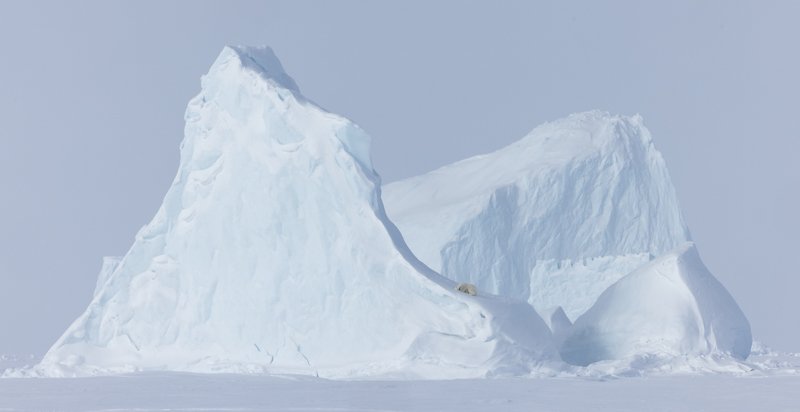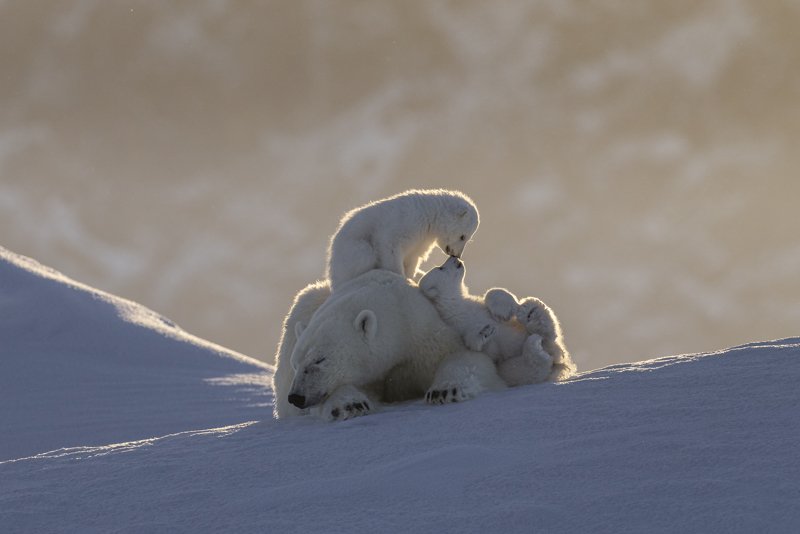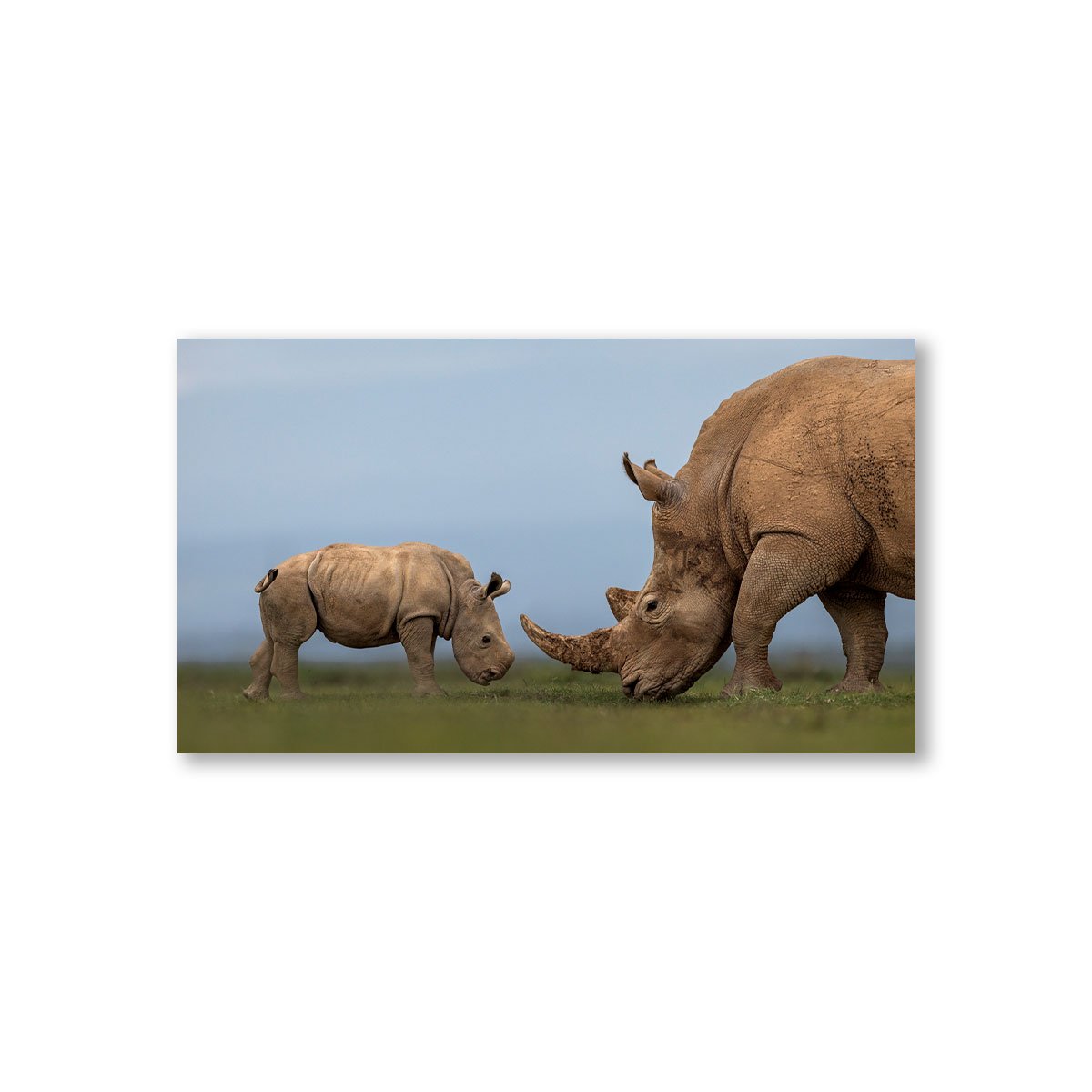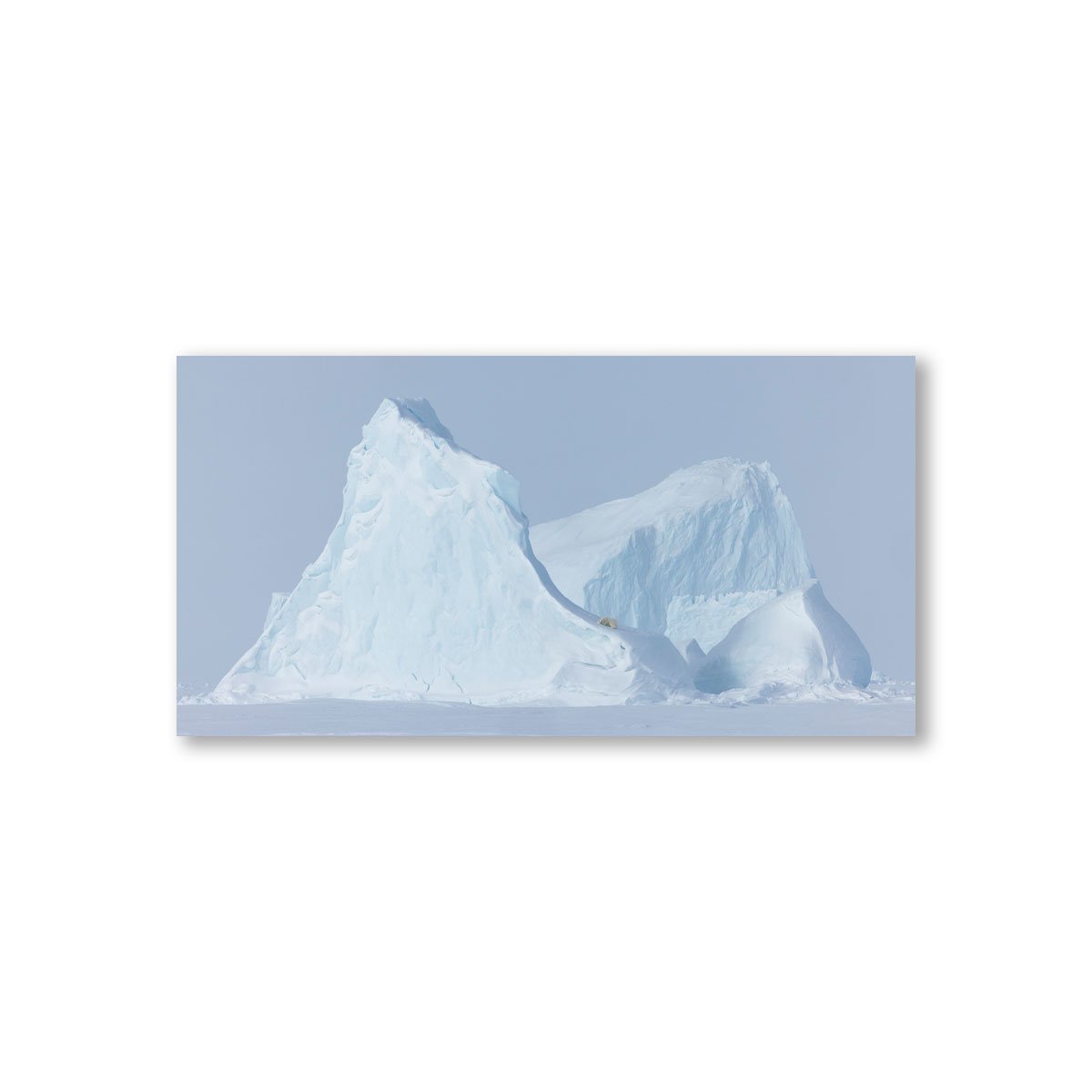A DAY WITH POLAR BEARS I’LL NEVER FORGET
I saw my first polar bear over a decade ago and I can still remember it vividly. It was my first experience of the Arctic, traveling on the Russin Icebreaker The Vavilov and from a distance there he was moving along the shoreline against a backdrop of huge ice cliffs. This is the image of the Arctic white walker & I was completely hooked.
My First Polar Bear: Ursus Maritimus
My love of polar bears has led me back again to the Artic a few times, to Kaktovik on the Northern Slope of Alaska and a couple of years ago to Baffin Island. I went there in 2023 saying it was going to be a once in a lifetime expedition. This March it will be my third time!
Why is Baffin so special for Polar Bears?
The week that you get to spend in Baffin is closest I’ve come to feeling like a real explorer. The sheer act of a getting there is an adventure. You fly to Ottawa then on to Iqaluit & then you pray that flying conditions allow for you to fly into Qikiqtarjuaq where you overnight, before your 3-hour skidoo ride to camp.
I must admit on my first visit I wasn’t as prepared as I should have been for the skiddoo ride. My cheap ski googles fogged up, my hands were frozen from the swirling freezing winds as I didn’t have the right gloves, so I have never been as thankful to get to camp.
Last year I nailed it! To be able to see and appreciate this pristine, beautiful landscape took my icy breath away. As we travelled along, we were specks in this vast landscape and its humbling to think that apart from the Arctic Kingdom team, you are amongst the privileged 30 people in the world who get to visit this frozen wilderness each year.
Polar Bear sightings
Camp on the ice is set up once a year from mid-March to mid-April. This timing coincides with polar bears coming out of the den, with polar bear mothers and their Coys (Cubs of the Year) being of special interest. What also blew my mind is that the towering icebergs I would see & the landscape around me, changes every year depending on where the icebergs that float from Greenland get stuck in the ice when the sea freezes. It’s incredible to witness & adds something extra special to this expedition.
To say that my return visit to Baffin got off to a good start is a bit of an understatement. We were just having breakfast when we heard that that a male polar bear had been spotted on the iceberg closest to camp. It was so close that rather than take the skiddoos to the sighting and spook the bear, we walked out as a group, stopping at various stages to ensure he was comfortable in our presence.
He was so comfortable that we spent the whole day with him. We even had our lunch of soup & cheese toasties on the ice whilst the bear took a nap! If I thought that day was hard to beat, then came the following day which probably ranks as one of my Top 5 days in the wild ever.
A day with Polar Bears I’ll Never Forget
Imagine stepping out of your tent first thing in the morning to visit the toilet and see a polar bear at the base of the iceberg with your naked eye. I couldn’t believe that the bear had stayed in the same place overnight. I don’t think our guides could too!
We had one spotter go out to keep an eye on the bear while we enjoyed breakfast and then we headed out to the iceberg less than 5 minutes from camp. As we got close, I could see that he moved onto the iceberg and was now in the perfect position in terms of framing the bear with other icebergs in the background. I grabbed my 70-200mm lens as I knew that this was the right lens to frame the bear and icebergs together. It was a magical scene in this Arctic dreamland.
Again, like the previous day once we knew the bear was comfortable in our presence we moved closer on foot to try different framing options. There’s something incredible about being on foot 150 meters away from the world’s biggest land predator. I also grabbed my 600mm to get a close-up portrait as the bear took a nap, but as peaceful as this image is, I still much prefer the wider framing.
We had been with the bear for about an hour when we got a message from one of the other spotters scouting for bears that a mother & two cubs were on the move. So, we left our bear to see if we could catch up with the mother & bears. We had travelled 15 minutes or less when we could see our spotters flanking the mother and bears at a distance. We got ahead of them and got into position as they moved closer.
Polar Bear and her cubs
This mother was a little more skittish moving at speed past us with the two little ones struggling at times to keep up. However, she did settle in a spot with the curious cubs regularly popping their heads up in our direction. We let them rest & we enjoyed another lunch on the ice in a specially set up tent.
The guides have so much experience understanding bear behavior and would never do anything which compromises their safety or impacts their behavior for sake of a photograph. So, once they assessed that the mum was comfortable we slowly made our way round to a position in front of the bears as they were snuggling together.
Unfortunately, something spooked the mother & she took off at speed with the cubs struggling to follow. I honestly thought that was it for the day. How wrong was I.
We had packed up our gear when again there was a message from one of the spotters that had followed her that she and the bears were near an iceberg that could see not far away.
When we got to the iceberg, I honestly couldn’t believe my eyes. There she was with the cubs snuggling between her legs on top of the iceberg. I just remember giggling in delight. It was a dream come true.
What followed was two hours of utter delight as the cubs played with each other and the mother. I can’t overstate how amazing it is to be able to witness these intimate moments.
Playful polar bear cubs
You are standing around in freezing temperatures but the joy and excitement of seeing such scenes overrides that. It’s only when you are packed up and traveling back to camp that you start to feel it. Thankfully on this day we were less than 10 minutes from camp and still beaming from ear to ear.
It was the perfect ending to an extraordinary day and one I’ll never forget.
Huge thanks to the team at Arctic Kingdom for making this day happen. They are one of the most professional teams I’ve ever travelled with. The fact that I’ve been back three times to Baffin underscores the trust that I have in them.
And finally, to Paul Goldstein- he is indefatigable in pushing himself, you and the whole team in trying to get the best out of each sighting. I’m can’t thank him enough for that.
Polar Bear Facts
· The IUCN Polar Bear Specialist Group lists the polar bear as a vulnerable species, citing sea ice loss from climate change as the single biggest threat to their survival.
· The IUCN estimates there are currently about 26,000 polar bears worldwide. But without action on climate change, we could lose all but a few polar bear populations by the end of the century.
Other challenges to the bears include increased commercial activities, conflicts with people, pollution, disease, & inadequate habitat protection.
· Wild polar bear cubs are most often born in December. The mother gives birth to 1-3 cubs, with twins most common. The family remains in the den until spring. While in the den, the mother bear doesn’t eat or drink. She is devoted to nursing and caring for her cubs.
· Totally dependent on their mothers, newborn cubs are blind, toothless, and covered with soft white fur. They weigh little more than 1/2 kg (1 lb) and are just 30-35 cm long (12 to 14 in). The cubs grow rapidly on their mother's rich milk (31% fat) and continue nursing for at least 20 months.













